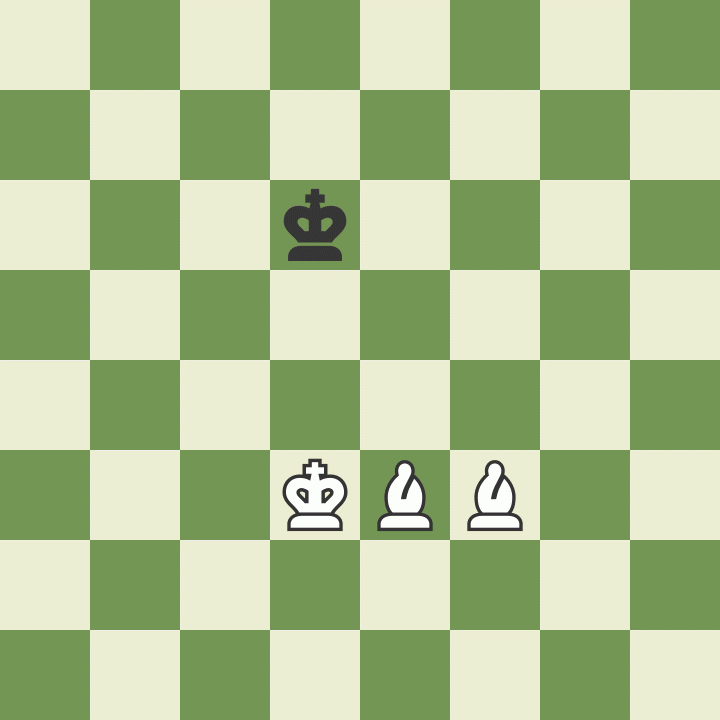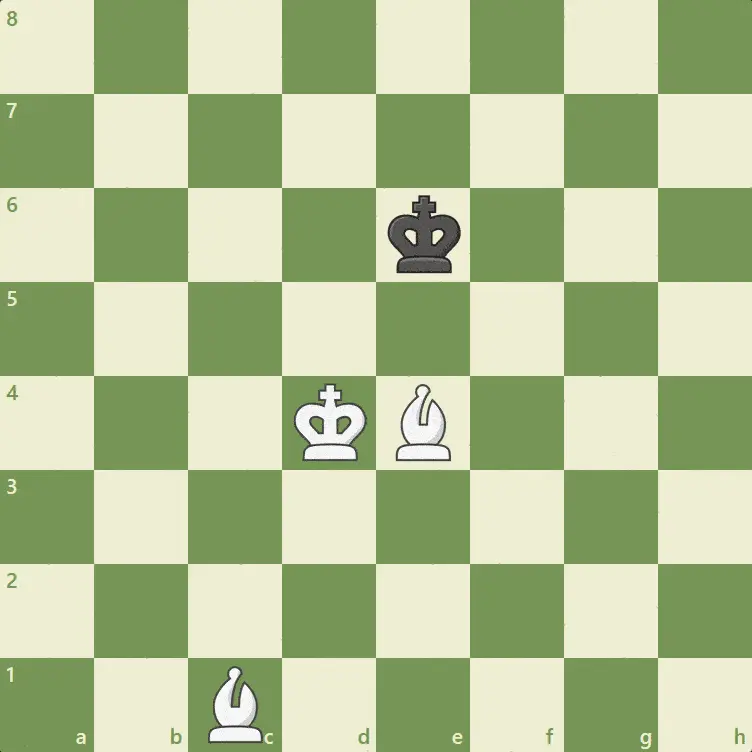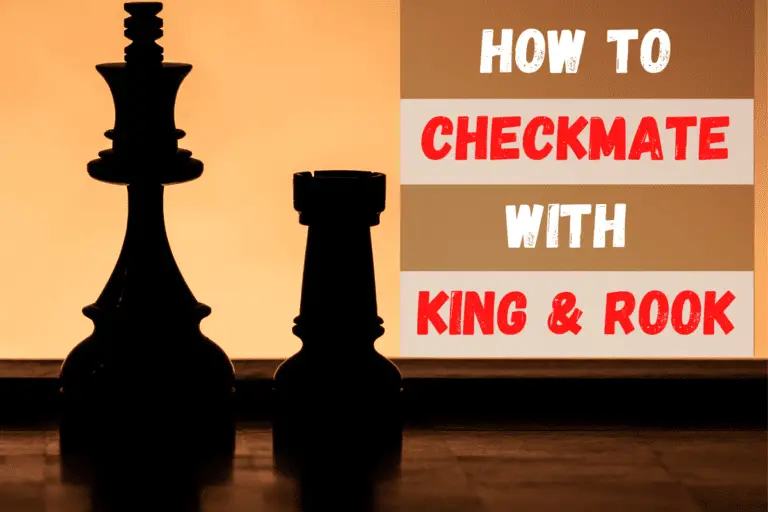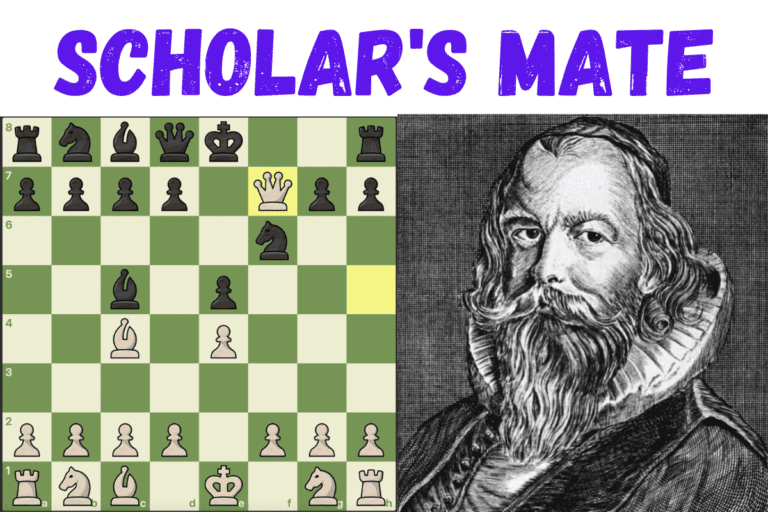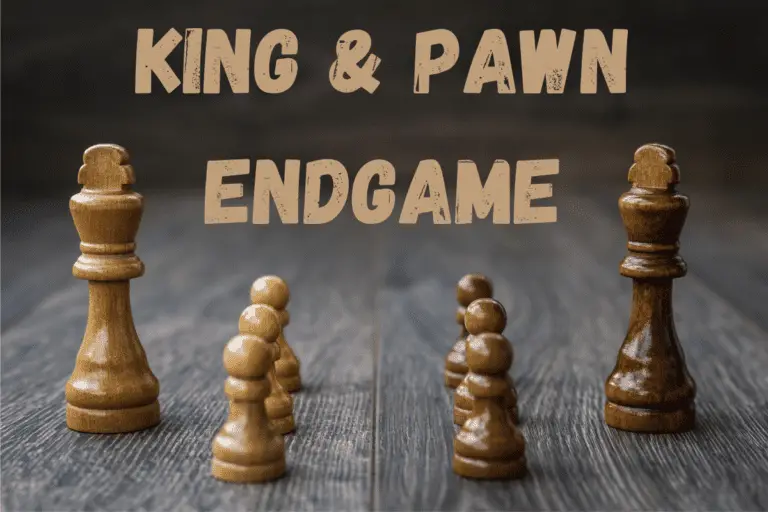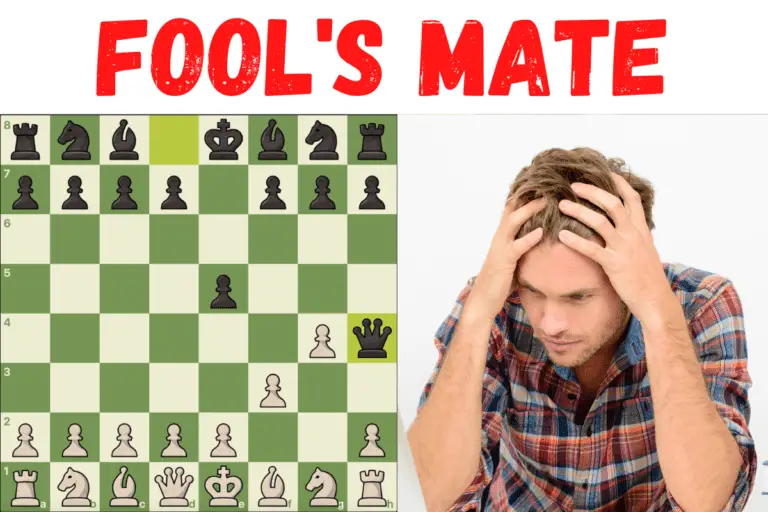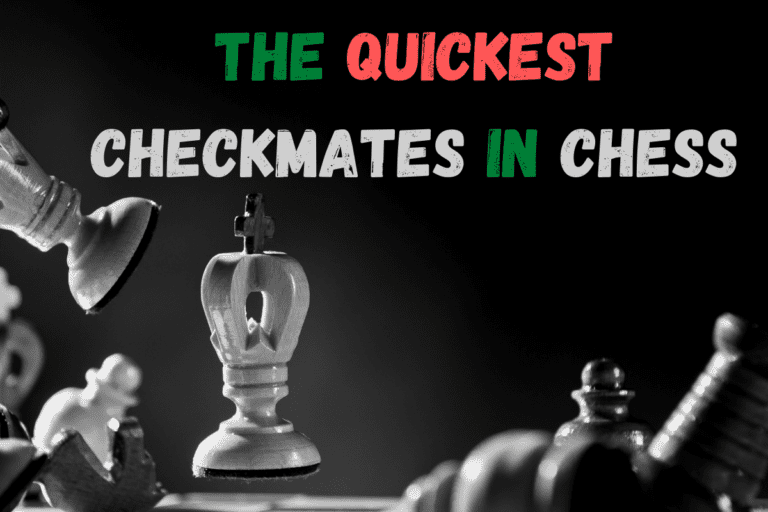Guaranteed Win with Two Bishops in Chess: Basic Checkmates
⭐⭐⭐ Take 4 minutes to read and improve your chess game ➡️ : This article was first published on, and is Copyright of Chessquestions.com
In chess, two bishops can be a powerful combination that can win the endgame. However, there is a lot to know about how two bishops checkmate an opponent – and this article will teach you everything!
We will get to the answer and moves straight away and fill in the background and extra reading later, so, here is how to deliver checkmate with just two bishops (+ the King of course!) in actual games.
How to checkmate with Two Bishops + a King
To checkmate with two bishops and a king, the trio of pieces need to work together to cut off any escape route for the enemy King and force it into the corner of the board where defeat is inescapable and inevitable. The forcing is done by the king whilst the bishops cut off the escape.
The first thing to understand is how the long range diagonal control of the board can be achieved by the bishops and that they do not have to be close to the King.
If you can keep the bishops far away, it is easier to control the enemy king and force it to the corner than being close where your bishops can be in danger of capture.
For instance, looking at the image below, it looks like the king is very much trapped with nowhere to go and checkmate is inevitable, whilst that is true, this is in fact a Mate in 24 moves! But one false move and the black king will capture one of the bishops and then it is a draw.
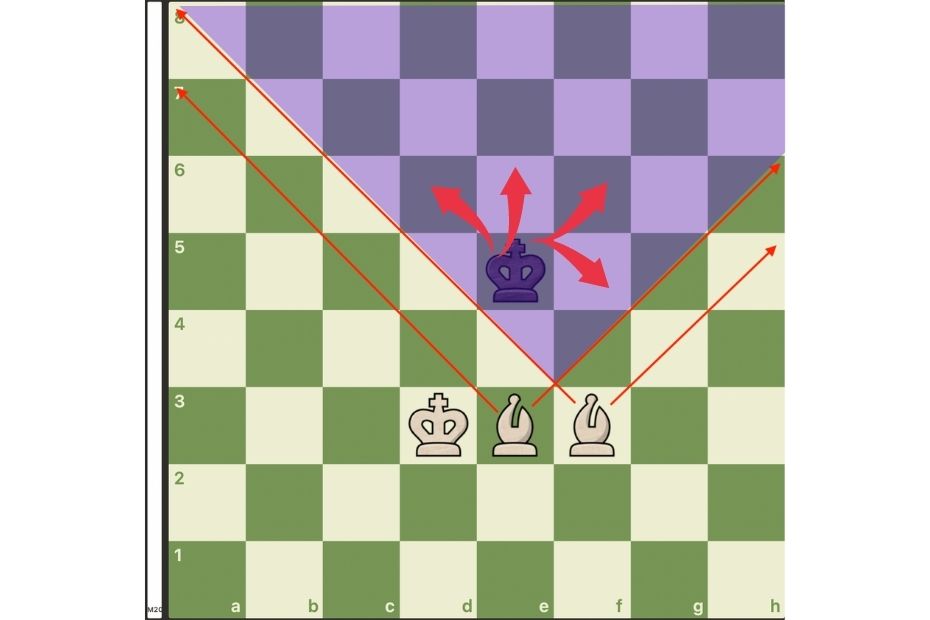
You can not checkmate in a game of chess with a lone king and a single bishop. So remember, control those diagonal, but at a distance with the king paying the enemy namesake closer attention and forcing back.
The king has to now move away. The bishops are protecting each other on the diagonals, as long as you can keep pushing the king back and not putting the bishops in danger, using your own white king [in the example] to restrict the enemy’s movement you will eventually get the king back to the h8 square and checkmated.
The animated GIF below shows you each move required to achieve the checkmate from the starting position above, but this does take into account that black is making the very best move each time, in reality, at our level, it might be over much quicker than this. In fact, at our level we might even be blundering a bishop and drawing the game!!, but let’s forget that for a moment.
The moves are below and the notation too
Note how the triangle within which the black king can move gets progressively smaller and smaller until there is no other option but to end up on the corner on the h8 square with nowhere to go.
From the starting position as in Figure A –
1… Kd6 2. Kd4 Ke6 3. Bd2 Kd6 4. Bf4+ Kd7 5. Kd5 Ke7 6. Bg4 Kf7 7. Be5 Ke7 8. Bf5 Ke8 9. Bd6 Kf7 10. Bf4 Kf6 11. Bg4 Kf7 12. Ke5 Ke7 13. Bg5+ Ke8 14. Be6 Kf8 15. Kd6 Kg7 16. Ke7 Kg6 17. Bf6 Kh7 18. Kf7 Kh6 19. Bg4 Kh7 20. Bg5 Kh8 21. Bh5 Kh7 22. Bg6+ Kh8 23. Bf6# 1-0
In reality, a player should have and probably would have resigned by now, with the exception of a timed game where white maybe in under time pressure.
This example required 24 moves to complete the checkmate against the black kingmaking optimum moves and that all takes time, When under time pressure one mistake move and a draw can be forced is a bishop is blundered, so it is not always the case that a lone king will resign in a game if the opportunity to force a draw is available.
[The lone king can not win a game on time, as a single king is insufficient material to win the game, so a draw by stalemate or time is the best that can be hoped for]
Push the Opponent King to the Edge of the Board
You’ve seen this in the example above. I have pulled this demonstration (without the eventual checkmate) from chess.com to demonstrate once again how the black King is literally forced to the edge. He has no choice, your bishops are cutting of portions of the board and your king is supporting the advance forward, making the black kings available squares to move to fewer and fewer.
Avoid the Stalemate
If your opponent is playing on with a lone king against your king and a pair of bishops, you are either in time trouble, or they are hoping once you get them in the corner you blunder and make a stalemate. The worst possible outcome (For you, not them!)
If you have time, double-check your final moves once the king is in the corner, ensure whatever move you make, you are either cutting down their move options or at least leaving one square if you are not checking on the move.
To give away the win at this stage is both inexcusable and hugely disappointing from a position certain victory.
Summary
The best advice in regards to learning this, is to play a few endgame puzzles on chess.com, or set up a board and play both the white pieces and the black king and see if you can beat yourself. Sometimes, playing chess by yourself is a great way to learn.

